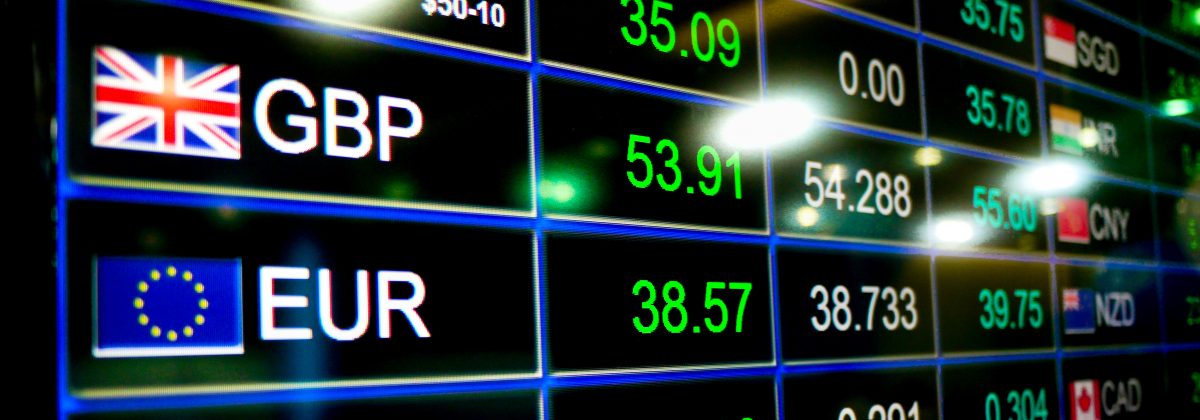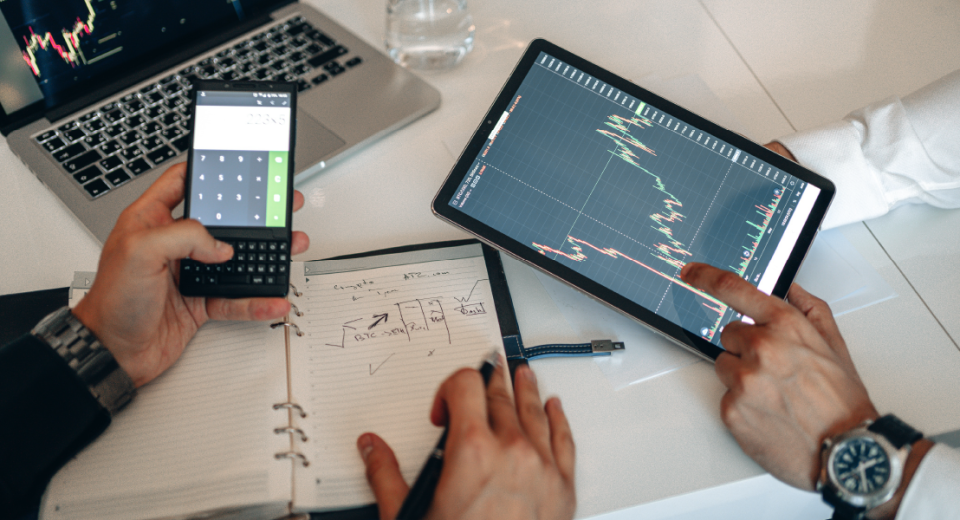Top 10 Biggest Trading Exchanges in the World

Trading exchanges were established over 400 years ago, with the first one set up in Amsterdam in 1602, with the aim to trade shares of the Dutch East India Company. Today, there are over 60 major exchanges in the world, of which 16 have a market capitalization of over $1 trillion each, accounting for 87% of the global market capitalisation as of 2016. By adopting technological advancements, they have made trading a viable profession and increased transparency and efficiency in the markets.
Along with advancing technology, entry barriers have also eased in recent years, making these exchanges dynamic. The emerging markets have also made their mark on the global economy. The smooth functioning of these exchanges is critical for global economic stability.
Here is a list of the 7 biggest stock exchanges, according to their market cap as of November 2018, as well as the top 3 global commodities exchanges by market cap.
1. New York Stock Exchange (NYSE) – Market Cap US$29.3 Trillion
Established in 1792, the NYSE has been the world’s largest stock exchange since World War I, surpassing the London Stock Exchange. Today, there are over 2,400 companies listed on the exchange, with a combined market cap of $30.1 trillion as of February 2018.
Previously, owned by NYSE Euronext (NYX), it belongs to the Intercontinental Exchange today. While the NYSE Composite Index measures the value of all the companies listed on the exchange, the Dow Jones Industrial Average (DJIA) measures the value of the top 30 companies. In January 2018, DJIA closed above 25,000 for the first time in history.
NYSE operates from 9:30am ET to 4:00pm ET.
2. NASDAQ – Market Cap US$10.8 Trillion
In 1971, the National Association of Securities Dealers (NASD) set up the NASDAQ, which stands for National Association of Securities Dealers Automated Quotations. Located just behind the NYSE, NASDAQ was the world’s first electronic stock market back then.
Today, it has an average monthly trading volume of $1.26 trillion, with one of the biggest tech companies listed on it. The world’s largest technology companies like Apple, Microsoft and Alphabet began their journey in the financial markets here. In a way, NASDAQ pioneered the modern IPO system. Its main index is the NASDAQ Composite Index.
NASDAQ operates from 9:30am EST to 4:00pm EST, with pre-trading and post-trading sessions.
3. Japan Exchange Group – Market Cap US$5.6 Trillion
Japan Exchange Group operates the Tokyo Stock Exchange and Osaka Securities Exchange, both of which were merged in 2011 to counter slow market growth in Japan.
The Tokyo Stock Exchange (TSE) has over 2,292 listed companies, with a market capitalisation of US$4.09 trillion, as of 2015. It is the largest stock exchange in Asia. The Nikkei 225 and TOPIX index track the performance of companies listed on the TSE.
Normal trading sessions are from 9:00am to 11:30am and from 12:30pm to 3:00pm Tokyo Time (GMT+9 hours), on weekdays.
4. Shanghai Stock Exchange – Market Cap US$4.06 Trillion
The Shanghai Securities & Commodities Exchange and Shanghai Chinese Merchant Exchange merged to form the Shanghai Stock Exchange in 1929. Due to tight capital account controls adopted by the Chinese government, the exchange is not entirely open to foreign investors. The SSE Composite Index maps the performance of companies listed on this exchange, which includes the Bank of China and PetroChina.
The morning session commences at 9:15am to 9:25am, followed by the afternoon session from 1:00pm to 3:00pm Shanghai Time (GMT+8 hours), on all days, except weekends.
5. Hong Kong Stock Exchange – Market Cap US$3.936 Trillion
Asia’s third largest stock exchange, the Hong Kong Stock Exchange had over 1,955 listed companies as of October 2016. Established in 1914, stocks listed on this exchange are categorised into “A” and “B” types; the former traded in local currency and the latter priced in US dollars for foreign investors. It is one the biggest exchanges of the emerging markets.
Trading session opens at 9:30am and closes at 4:00pm, Hong Kong Time (GMT+8 hours).
6. Euronext – Market Cap US$3.927 Trillion
Located in Amsterdam, Euronext is the largest stock exchange in the EU, with over 1,300 listed companies. Along with cash and derivatives, the exchange also provides market listing data, market solutions and custody and settlement services in markets like Paris, Lisbon, Brussels and London. The AEX-All shares, CAC 40, Euronext 100 and BEL 20 are some of the popular indices traded on the exchange.
Forex, commodities, indices, bonds, derivatives and ETFs are some of the financial instruments traded on Euronext. The trading session begins at 9:00am and closes at 5:30pm, Paris Time.
7. London Stock Exchange Group – Market Cap US$3.7 Trillion
Founded in 1571, the London Stock Exchange (LSE) is one of the oldest stock exchanges in the world. It is owned and operated by the London Stock Exchange Group, which also owns Borsa Italiana, MillenniumIT and Russell Indexes, among many others. It has more than 3,000 listed companies, including British Petroleum, Barclays and GlaxoSmithKline.
Its trading hours are from 8:00am to 4:30pm, GMT.
Top 3 Global Commodities Exchanges
Commodities have become one of the popular asset classes, traded widely through derivatives like swaps and futures contracts. The three major commodities exchanges in the world are:
1. Chicago Mercantile Exchange (CME Group)
Founded in 1898, as Chicago Butter and Egg Board, the CME has the widest range of options and futures contracts in the world. These include contracts of all kinds, from agriculture to energy and equity indexes.
2. Tokyo Commodity Exchange
Established in 1984, This is Asia’s primary commodities exchange and is also known as TOCOM. TOCOM includes futures and options in precious metals, rubber, oil and soft commodities. Its current trading platform is based on NASDAQ OMX technology.
3. London Metal Exchange
The London Metal Exchange traces its roots back to 1571, when the Royal Exchange was involved only in copper contracts. Today, some of the major metals like aluminium, zinc, lead and nickel are traded through options and futures here. Apart from base metals, it has other commodities as well. It offers hedging as well as options of physical deliveries to settle contracts.
Reference Links
- https://en.wikipedia.org/wiki/List_of_stock_exchanges
- http://money.visualcapitalist.com/all-of-the-worlds-stock-exchanges-by-size/
- https://www.world-exchanges.org/our-work/statistics
- https://en.wikipedia.org/wiki/New_York_Stock_Exchange
- https://www.cnbc.com/2018/01/04/dow-25k-us-stocks-jobs-data-adp-economy.html
- https://www.valuewalk.com/2019/02/top-10-largest-stock-exchanges/
- https://en.wikipedia.org/wiki/NASDAQ
- https://www.statista.com/statistics/270126/largest-stock-exchange-operators-by-market-capitalization-of-listed-companies/
- https://en.wikipedia.org/wiki/Shanghai_Stock_Exchange
- https://www.world-exchanges.org/our-work/statistics
- https://en.wikipedia.org/wiki/Hong_Kong_Stock_Exchange
- https://en.wikipedia.org/wiki/Commodity_market
- https://commodityhq.com/trading-strategies/detailing-the-top-commodity-exchanges/
- https://en.wikipedia.org/wiki/Tokyo_Commodity_Exchange







